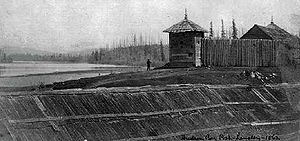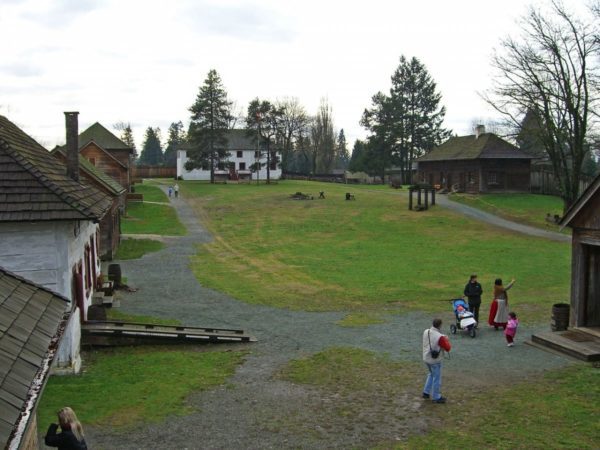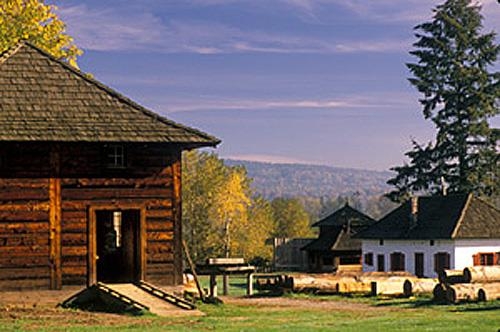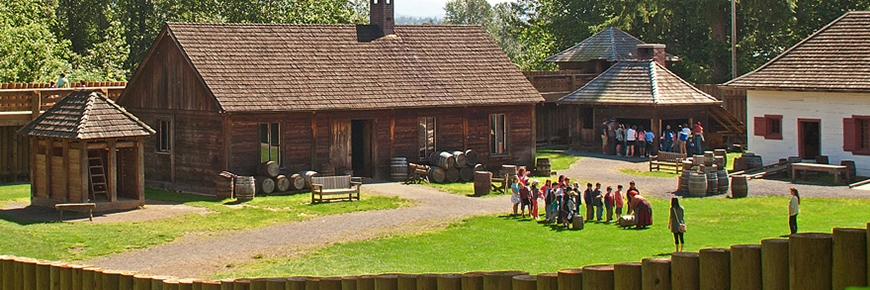Fort Langley is the humble home of Jelly; but did you know that it is also The Birthplace of British Columbia? We explored the history of our notable neighbours at the Fort and now we’re even more proud to be a part of this historic community. Let us transport you back to the 19th century when it all began…
It was 1827 and the British were under pressure to secure the land south of the Fraser River before the American’s reached it. After staking their claim, the area became the first trading post of the Hudson’s Bay Company. In 1824, Govern George Simpson foresaw the American’s establishing their border at the 49th parallel, and thus, he ordered the construction of the Fort, which was to be named after the director of the Hudson’s Bay Company, Thomas Langley. Three years later, the construction process began for the Fort and the 4.6-metre high palisade that was to surround the 1,500 square metres around the building.

The Palisades of Fort Langley and the Fraser River (Photo source: Wikipedia)
As the years went on, it was discovered that the Fraser River was unsuitable as a trade route. As the fur trade dried up, there was a shift to farming and fishing; thus, The Fort continued to play a key role in maintaining a competitive edge for the Hudson’s Bay Company. In 1839, the original Fort was abandoned and a new one was built 4 KM upstream in a location better suited for farming. Unfortunately, this Fort burned down ten years after being built and a replacement was erected that covered 14,000 square meters, housed several bastions and 14 other buildings. This is the present day Fort Langley Historic Site.

Fort Langley Historic Site (Photo source: Wikipedia)
In the years that followed the rebuild, the Fort was used as a trading post for cranberries and salted meats such as salmon, port and beef. During the busy years, between 1845 and 1845, the Fort exported as many as 2,000 barrels of salmon per year. In 1848, a new fur trading route was established from Fort Hope to Fort Langley via flat-bottomed boat along the river. A decade later, gold was discovered in the area. The rise of both industries sparked interest in the region and within 1 year, 30,000 prospectors arrived to capitalize on the average daily turnover of $1,500. Originally granted the monopoly of the gold industry by the British government, the Hudson’s Bay Company was revoked that ownership in 1858 when the crown colony of British Columbia was created. A 17-gun salute announced the official transition into colonial status when James Douglas was named the colony’s first governor.

(Photo source: Canada’s Historic Places)
Without the monopoly, the Hudson’s Bay Company faced competition in all industries and in 1870, the Fort Langley lands were put up for sale. By 1886, all trading out of the Fort had ceased.
In 1923, Historic Sites and Monuments Board of Canada declared the Fort a national historic site and in 1955, it became a national historic park.
Today, you can visit Fort Langley National Historic Site take a guided tour, watch live demonstrations, and experience the history of British Columbia.

(Photo source: Parks Canada)
Information retrieved from 604now.
Categories:
Fort Langley
Tags:
Fort Langley, history



